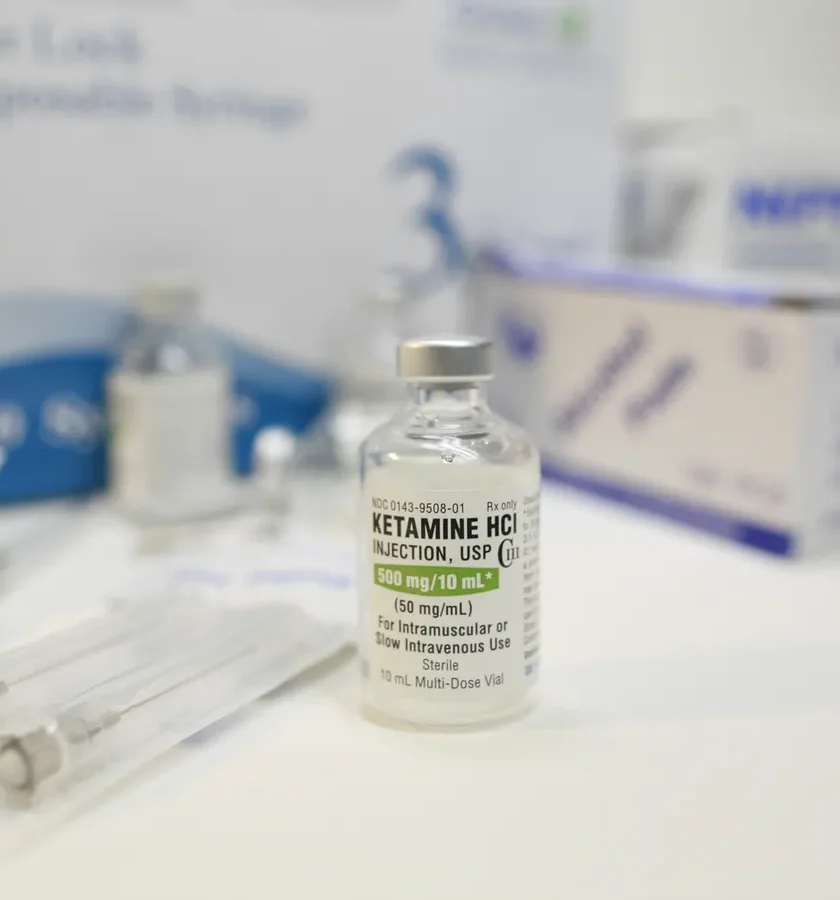What is Ketamine Infusion:
Ketamine therapy in pain management involves the use of low-dose ketamine infusions to help manage chronic and severe pain, particularly when other treatments have not been effective. Ketamine, is recognized for its ability to disrupt the transmission of pain signals in the brain. Ketamine works by blocking NMDA (N-methyl-D-aspartate) receptors in the brain and spinal cord. These receptors play a crucial role in the development and persistence of pain by amplifying pain signals. By inhibiting NMDA receptors, ketamine can reduce pain sensation and modulate the central nervous system’s response to pain. Additionally, ketamine has anti-inflammatory properties and promotes neuroplasticity, which may help “reset” nerve pathways associated with chronic pain.
Candidates Ketamine Infusion:
- Patients with Complex Regional Pain Syndrome (CRPS): Those suffering from severe, chronic pain that has not responded to other treatments.
- Patients with Neuropathic Pain: Individuals experiencing nerve pain due to conditions like diabetic neuropathy, postherpetic neuralgia, or spinal cord injuries.
- Patients with Fibromyalgia: People with widespread, chronic musculoskeletal pain who have not found relief through conventional therapies.
- Patients with Chronic Migraine or Headaches: Individuals with refractory migraines or chronic headaches that do not respond to standard treatments.
- Patients with Chronic Post-Surgical Pain: Those who continue to experience pain long after surgery, especially when other pain relief methods have failed.
- Patients with Cancer-Related Pain: Individuals experiencing severe pain due to cancer or cancer treatments, particularly when traditional pain management options are insufficient.
- Patients with Opioid-Resistant Pain: Those whose pain does not respond adequately to opioid medications or who seek alternatives to opioid therapy due to side effects or dependence concerns.
The Ketamine Infusion Process:
- Initial Consultation: The patient meets with a pain management specialist to evaluate whether the patient is a good candidate for ketamine therapy.
- Comprehensive Assessment: A thorough physical examination is performed, along with any necessary diagnostic tests. Psychological and psychiatric evaluations may be conducted to rule out contraindications like active psychiatric disorders. The treatment plan is the. customized based on the patient’s specific pain condition and response to prior treatments.
- Pre-Treatment Preparation: The patient is given instructions to follow before the infusion, such as fasting for a few hours and arranging for transportation home, as they will not be able to drive afterward. A baseline assessment of the patient’s pain levels, vitals, and any co-existing conditions is taken.
- Infusion Session: The patient is seated or reclined in a comfortable, quiet setting. An intravenous (IV) line is inserted into the patient’s arm or hand, through which a low dose of ketamine is administered over a set period, typically 40 minutes to several hours, depending on the protocol. The infusion is done in a monitored environment, with healthcare staff checking vital signs like blood pressure, heart rate, and oxygen levels throughout the procedure to ensure safety. The patient may experience some dissociation or mild hallucinations during the infusion, which is usually mild and temporary.
- Post-Infusion Monitoring: After the infusion is complete, the patient is monitored for any immediate side effects and given time to recover. The healthcare team assesses the patient’s pain levels and overall response to the infusion before they are allowed to go home. The patient may feel drowsy or disoriented, so they must have someone to drive them home and ensure they rest afterward.
Follow-Up: The patient returns for follow-up visits to assess the effectiveness of the ketamine therapy and to adjust the treatment plan as needed. Depending on the patient’s response, additional infusions may be scheduled as part of a series, often starting with multiple sessions over several days or weeks, followed by maintenance infusions if necessary. The patient’s pain relief is evaluated over time, and their treatment plan may be modified based on the outcomes of the ketamine therapy.


